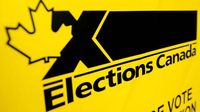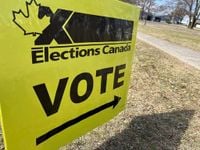On April 28, 2025, Canadians are heading to the polls to elect their next Parliament after a heated 37-day election campaign. Approximately 28.2 million voters are called to cast their ballots, marking a significant moment in the country’s democratic process.
Polling stations across Canada will be open for 12 hours, but the exact hours vary by time zone. In Newfoundland and Labrador, voters can cast their votes from 7:00 AM to 7:00 PM local time. The Atlantic provinces, including New Brunswick, Nova Scotia, and Prince Edward Island, have voting hours from 7:30 AM to 7:30 PM. In Quebec, Ontario, and Nunavut, polling stations will be open from 9:30 AM to 9:30 PM, while in Manitoba, the hours are the same. For Alberta, Saskatchewan, and the Northwest Territories, voting will occur from 9:30 AM to 9:30 PM, and in British Columbia and Yukon, polling places will be open from 10:00 AM to 10:00 PM.
Employers are required by law to grant their employees three consecutive hours to vote, ensuring that everyone has the opportunity to participate in this crucial civic duty. Voters must present valid identification to cast their ballots. Acceptable forms of ID include a driver’s license or any government-issued identification that includes a photo, name, and current address. If voters do not have such a document, they can provide two pieces of identification, one of which must show their address.
The election comes in the wake of a campaign significantly influenced by international events, particularly a trade war initiated by U.S. President Donald Trump. This issue dominated discussions among candidates, shaping the platforms of various parties. Liberal Party leader Mark Carney, for example, has consistently emphasized the need for a strong response to protect Canadian interests amid these challenges.
As of April 23, 2025, more than 7.3 million Canadians had already voted during advance voting days, representing a 25% increase from the 2021 general election. Nearly one million voters had also used special ballots, including mail-in voting and in-person voting at Elections Canada offices. This surge in early voting reflects a growing engagement among Canadians in the electoral process.
On election night, preliminary results will be reported as soon as the polls close, with a significant number of ballots expected to be counted that evening. Elections Canada has assured voters that anyone in line at the time of closing will still be able to cast their vote, no matter how long the wait.
For this election, a total of 343 seats are up for grabs in the House of Commons, an increase from 338 due to the addition of five new ridings following recent electoral boundary changes. A party needs to secure at least 172 seats to form a majority government; anything less will result in a minority government.
As the results begin to roll in, Canadians can tune in to Noovo Info for live coverage starting at 7:30 PM. The network will provide analysis and updates throughout the evening, with a special edition of "Les Débatteurs de Noovo" airing later in the night to discuss the implications of the election outcomes.
Throughout the campaign, various issues were highlighted, including housing, law and order, and healthcare. The New Democratic Party (NDP) focused heavily on healthcare, advocating for expanded drug coverage, while the Conservative Party emphasized tougher measures on repeat offenders. The Bloc Québécois aimed to defend Quebec's interests in potential negotiations with the United States.
As Canadians prepare to vote, the atmosphere is charged with anticipation. The outcome of this election will not only shape the next government but also set the tone for how Canada navigates its relationship with the United States and addresses domestic challenges. With a diverse array of candidates and platforms, voters have a crucial opportunity to voice their opinions and influence the direction of their country.
The stakes are high, and as the polls open across the nation, Canadians are reminded of the importance of their participation in democracy. The decisions made today will resonate for years to come, making it imperative for every eligible voter to make their voice heard.
In summary, the election on April 28, 2025, is a pivotal moment for Canada. With millions of voters heading to the polls, the nation stands at a crossroads, ready to determine its future leadership and direction. As the day unfolds, the eyes of the country will be on the results, eager to see who will emerge as the leader of Canada for the next four years.





